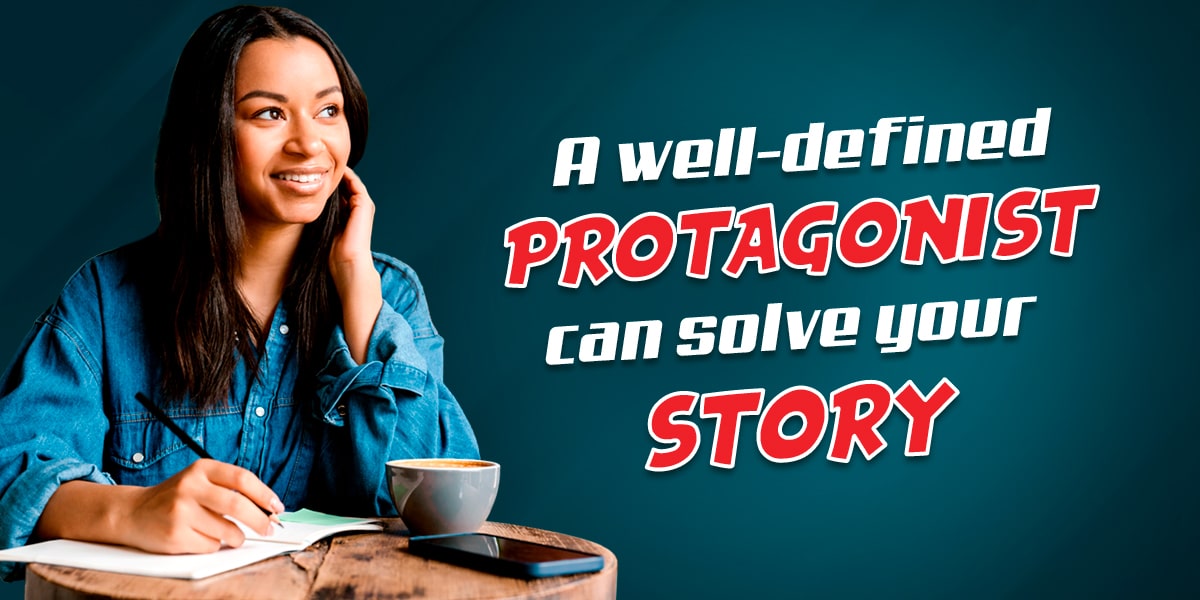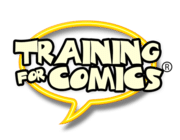A well-defined protagonist can solve your story
Have you ever found yourself lost in the middle of your own narrative, not knowing how to continue or where to direct your plot? You’re not alone. Many writers experience this feeling of creative disorientation. However, there is a powerful and effective solution: a well-defined protagonist. In this article, we’ll explore how a solid main character can become the compass that guides your story to success.
The protagonist: The anchor of your narrative
Imagine your story as a ship sailing in a vast ocean of possibilities. Without a firm anchor, it’s easy to be carried away by currents of scattered ideas and lose your way. This is where a well-developed protagonist comes into play. This central character is not only the heart of your narrative but also the beacon that illuminates the path forward.
From ancient Greek tragedies to modern television series, the protagonist has always been the axis around which the plot revolves. It’s no coincidence; a strong main character provides coherence, direction, and purpose to your story. Want to take your narrative skills to the next level? Discover how here.
How a solid protagonist solves narrative problems
When you find yourself at a dead end in your writing, your protagonist can be the key to unlocking new possibilities:
- Decision making: When faced with any plot dilemma, ask yourself: “What would my protagonist do in this situation?”
- Plot coherence: Every twist in the story must make sense in relation to your protagonist’s personal journey.
- Development of secondary characters: The characters surrounding the protagonist come to life and purpose based on how they interact with them.
- Conflict resolution: The way your protagonist faces and solves problems defines the tone and direction of your narrative.
Click here to explore advanced character development techniques and take your protagonist to the next level.
Creating a memorable protagonist
For your protagonist to be truly effective as a narrative tool, you need to know them thoroughly. Here are some strategies to achieve this:
- Detailed profile: Create a complete biography, including background, fears, desires, and motivations.
- Unique voice: Develop a distinctive style of speech and thought for your character.
- Internal conflicts: Endow your protagonist with internal struggles that complement the external challenges of the plot.
- Evolution: Plan how your character will change throughout the story.

A well-defined protagonist not only solves narrative problems but also enriches your story in unexpected ways. Looking for inspiration to create unforgettable characters? Find creative resources here.
The protagonist as a narrative compass
When you feel lost in your writing, always return to your protagonist. Ask yourself questions like:
- How would my protagonist react to this new plot twist?
- What decision would they make based on their past experiences?
- How does this event affect the character’s development arc?
These questions will not only help you maintain coherence in your narrative but can also inspire new directions for your story.
Advanced techniques for developing your protagonist
To take your protagonist to the next level, consider these advanced techniques:
- Character diary: Write diary entries from your protagonist’s perspective to delve deeper into their psychology.
- Family tree: Create a family tree for your character, exploring how their family history influences their actions and decisions.
- “Off-camera” scenes: Write scenes that won’t appear in your final story but help you better understand your protagonist.
- Character interview: Conduct a fictional interview with your protagonist, asking them tough questions and exploring their answers.
Boost your creativity and discover new ways to develop characters here.
The protagonist and narrative structure
A well-defined protagonist not only solves plot problems but can also help you structure your story more effectively:
- Act 1 (Introduction): Introduce your protagonist and their world, establishing their initial desires and conflicts.
- Act 2 (Confrontation): Challenge your protagonist, forcing them to grow and change in response to obstacles.
- Act 3 (Resolution): Show how your protagonist has evolved and how they apply what they’ve learned to resolve the main conflict.
This structure, centered on the protagonist’s journey, provides a solid framework for your narrative.

The art of balancing protagonist and plot
While a strong protagonist is crucial, it’s important to maintain a balance between character development and plot progression. Here are some tips to achieve this:
- Integrate personal growth with plot events: Each external challenge should reflect or provoke an internal change in your protagonist.
- Use secondary characters to highlight aspects of the protagonist: Relationships and conflicts with other characters can reveal hidden facets of your main character.
- Create subplots that complement the main arc: These secondary stories should enrich, not distract from, the protagonist’s central journey.
- Maintain tension between the protagonist’s desires and the plot’s needs: This friction can generate interesting conflicts and character development.
Want to perfect the art of intertwining character and plot? Explore advanced resources here.
Avoiding common traps in protagonist development
Even with the best intentions, it’s easy to fall into certain errors when developing your protagonist. Here are some common problems and how to avoid them:
- Too perfect protagonist: A character without flaws is uninteresting and difficult to relate to. Make sure your protagonist has realistic faults and weaknesses.
- Lack of growth: Your protagonist should evolve throughout the story. A static character can make your narrative feel stagnant.
- Inconsistency in actions: Ensure that your protagonist’s decisions and actions are consistent with their personality and past experiences.
- Over-explanation: Trust your readers’ intelligence. It’s not necessary to explain every thought or motivation of your protagonist; allow some things to be revealed through actions.
The protagonist as a reflection of universal themes
A well-developed protagonist can be a powerful vehicle for exploring universal themes that resonate with your audience. Consider how your main character can address issues such as:
- The search for identity
- The conflict between duty and desire
- Overcoming past traumas
- The struggle against social expectations
- The power of friendship and love
By connecting your protagonist’s personal experiences with these broader themes, you can create a story that not only entertains but also deeply resonates with your readers.
Digital tools for character development
In the digital age, there are numerous tools that can help you develop and organize your protagonist’s information:
- Mind mapping software: Ideal for creating visual diagrams of your character’s relationships and characteristics.
- Specialized writing applications: Many offer templates and prompts for character development.
- Customizable databases: Perfect for storing and organizing details about your protagonist and other characters.
- Name and trait generators: Useful for inspiration when you’re stuck on certain aspects of your character.
Discover innovative tools to enhance your creative process here.
The protagonist in different genres
The way you develop and use your protagonist can vary significantly depending on the genre you’re writing in:
- Literary fiction: Focus on the psychological complexity and internal development of the character.
- Thriller: Create an intelligent and resilient protagonist who can face intense challenges.
- Fantasy: Develop a character who can navigate and adapt to a world full of magical or supernatural elements.
- Science fiction: Your protagonist should be able to question and explore the ethical and social implications of technological advances.
- Romance: Focus your attention on the emotional growth and interpersonal relationships of your protagonist.
Conclusion: Your protagonist, your creative ally
A well-defined protagonist is much more than just an element of your story; it’s your most valuable creative ally. By investing time and effort in developing a solid main character, you’re not only creating a richer and more coherent story, but you’re also providing yourself with an invaluable tool to overcome creative blocks and take your narrative in exciting and unexpected directions.
Remember, your protagonist is the beating heart of your story. Get to know them deeply, allow them to grow and change, and let them guide you through the ups and downs of your creative process. With a strong protagonist as your compass, you’ll never be truly lost in the vast ocean of storytelling.
So the next time you feel stuck in your writing, return to your protagonist. Explore their desires, fears, and motivations. Ask yourself how they would react to the challenges you’ve created. Let their unique voice inspire and guide you. With a well-defined protagonist by your side, you’ll not only solve your story but elevate it to new heights of creativity and emotion.
Ready to take your narrative to the next level? Start your creative journey here and discover how you can transform your ideas into unforgettable stories, with protagonists that capture the imagination and heart of your readers.



